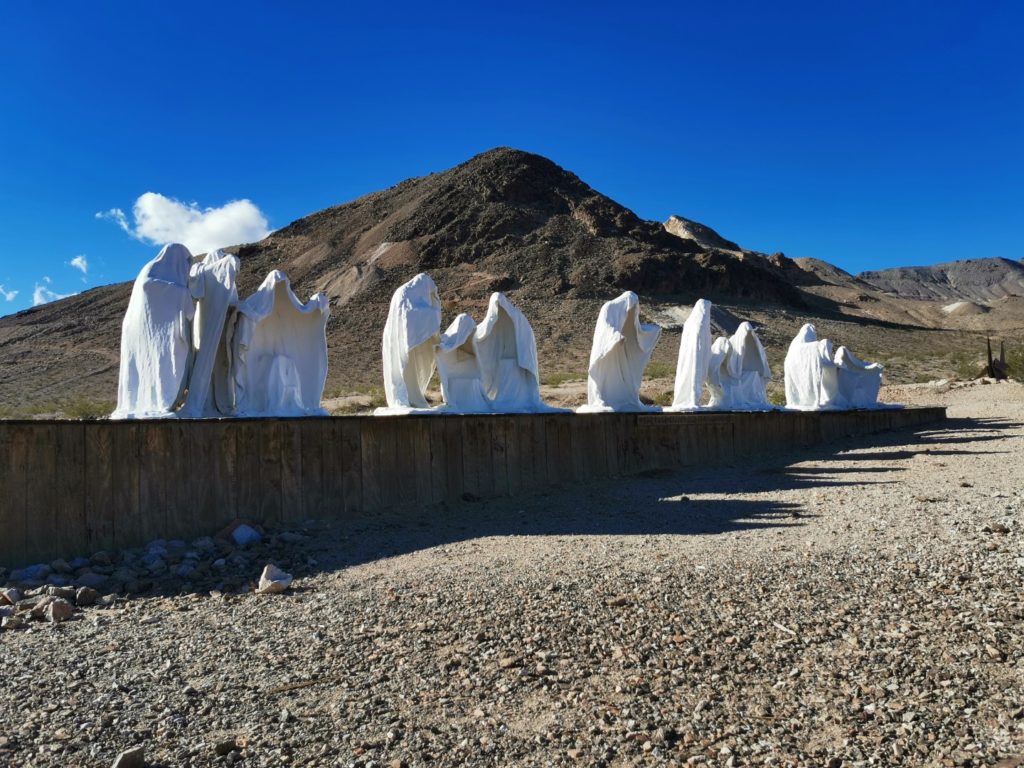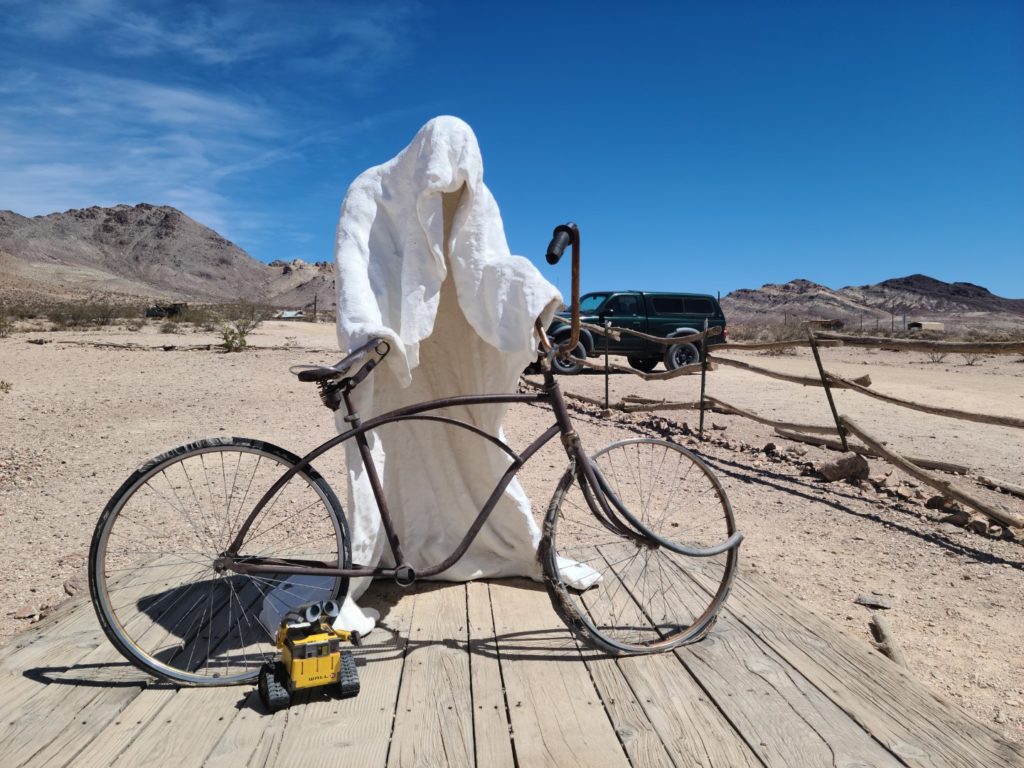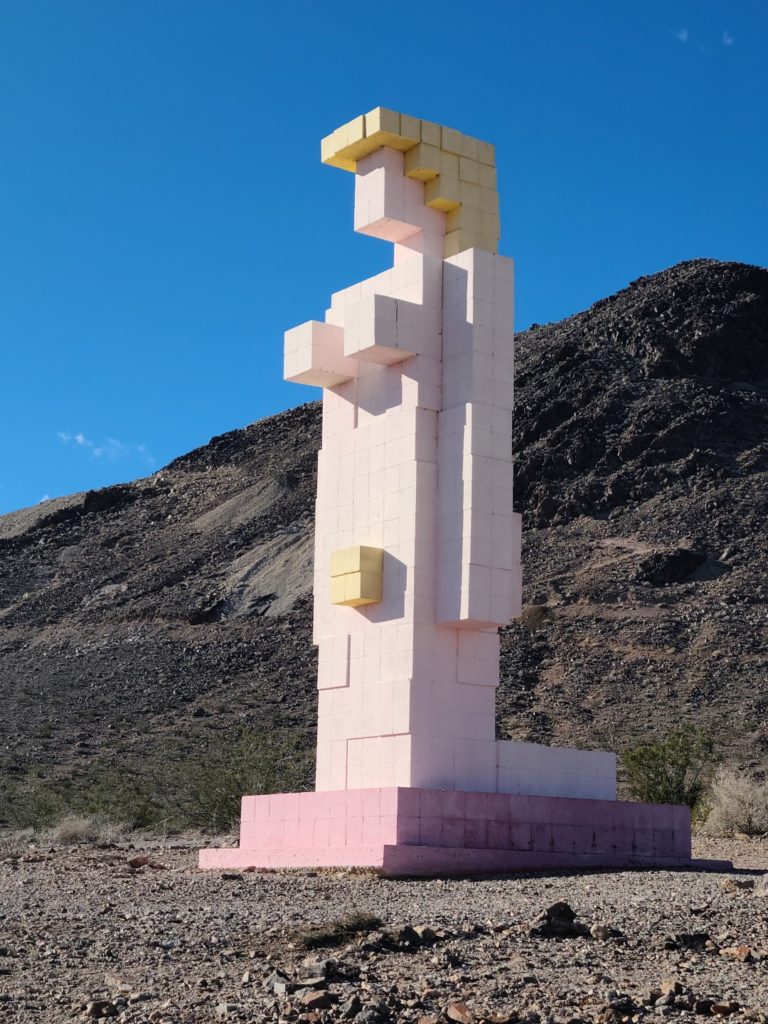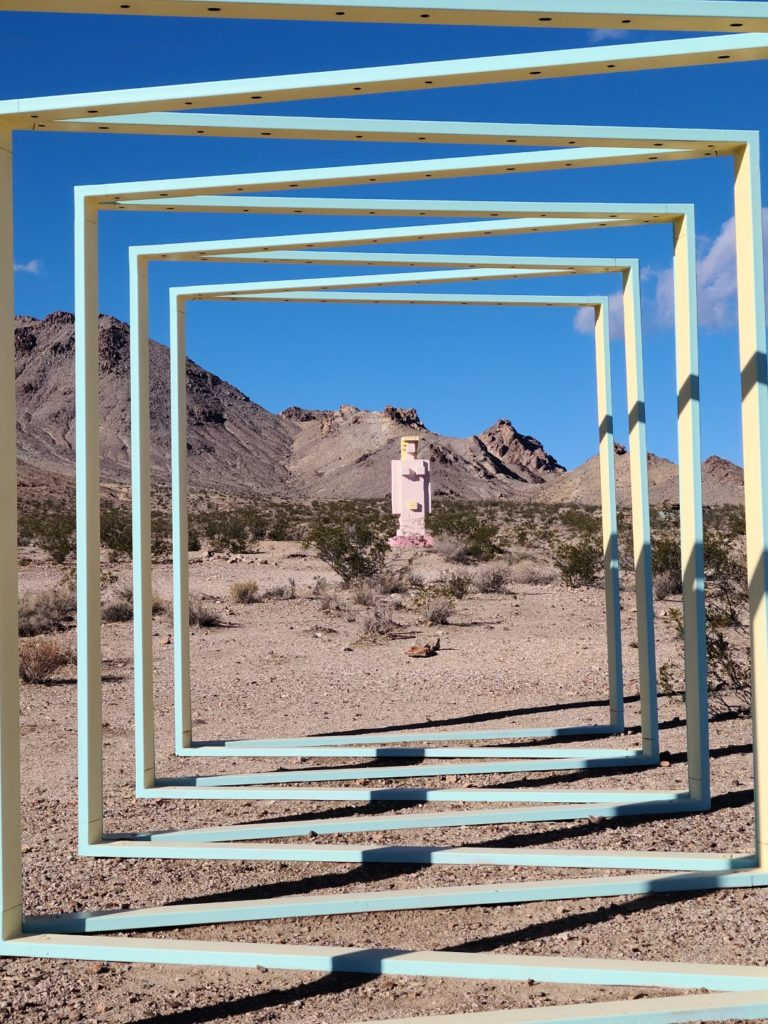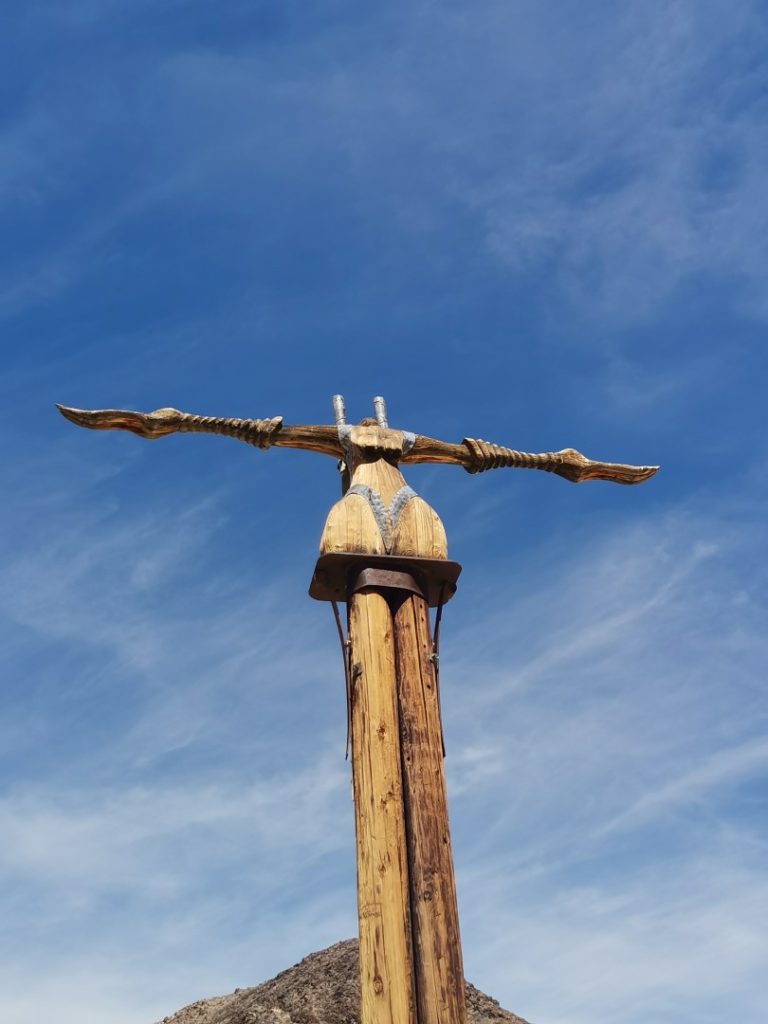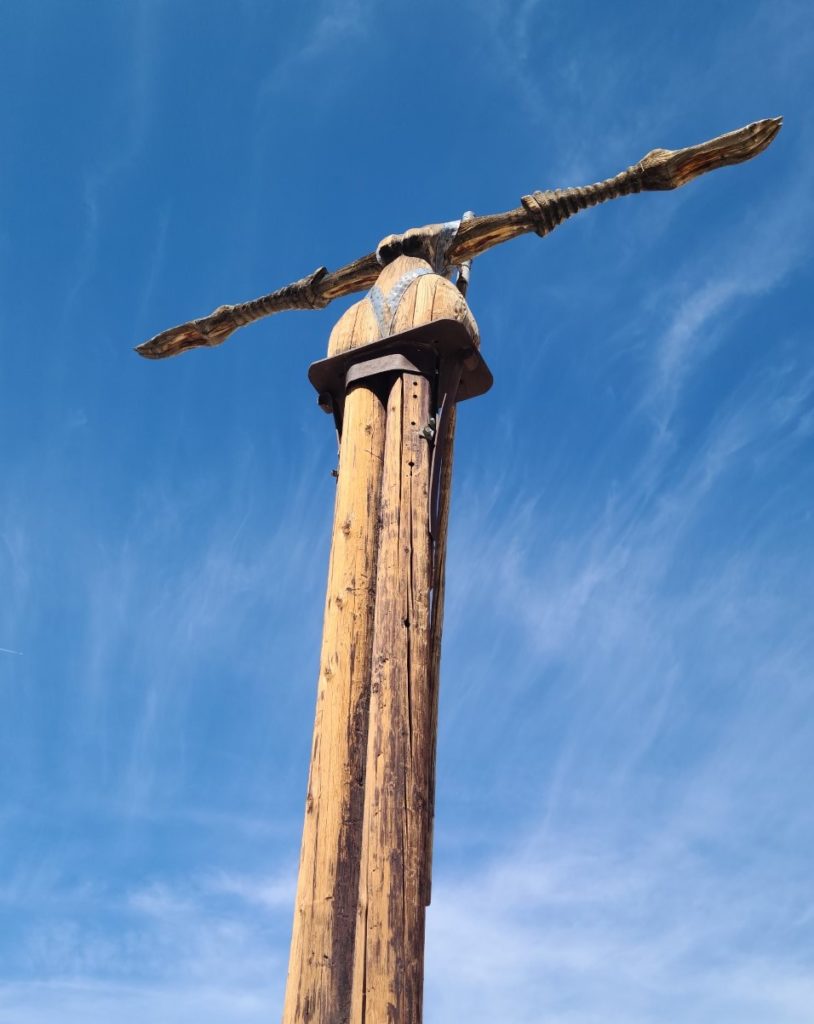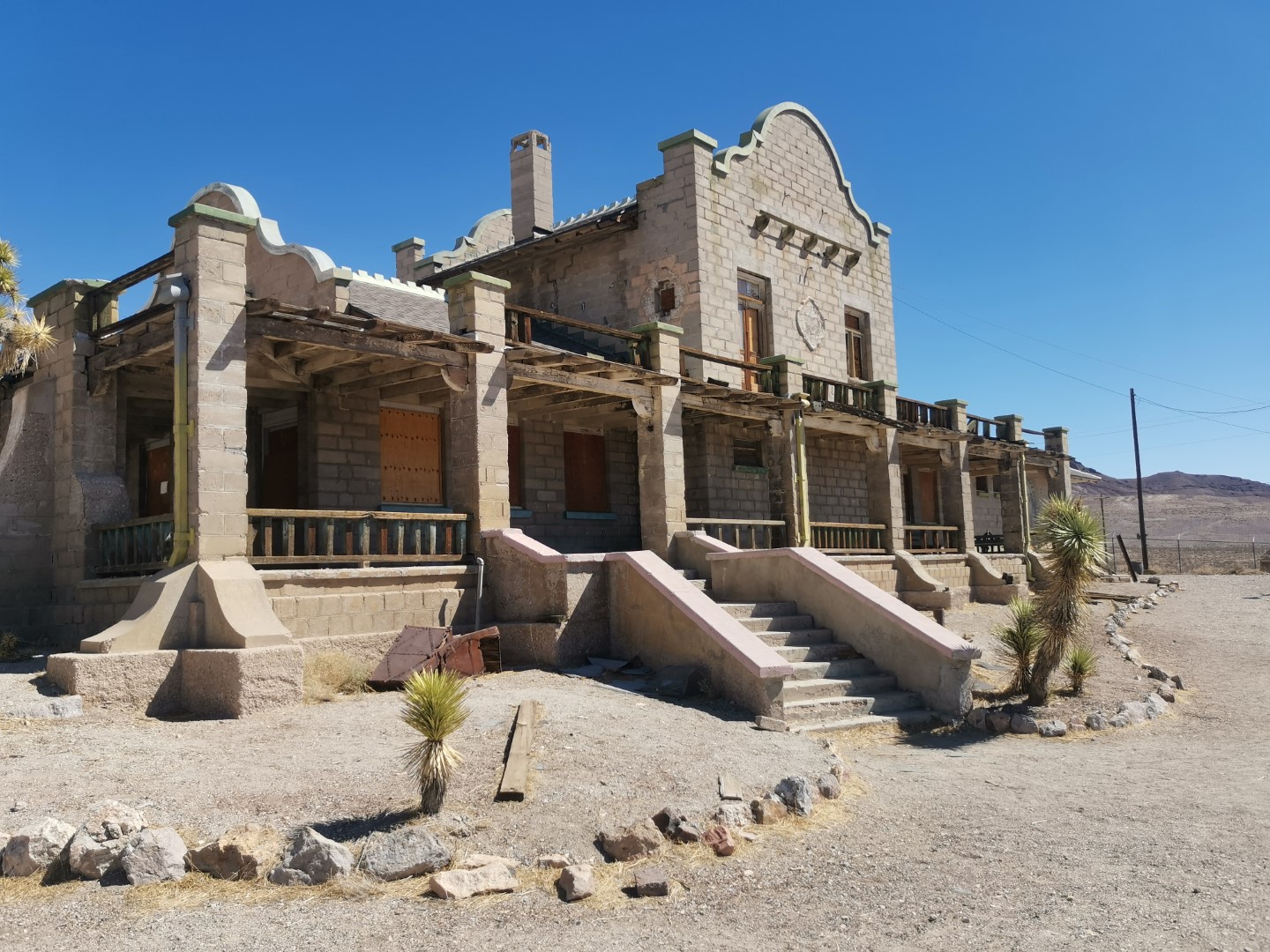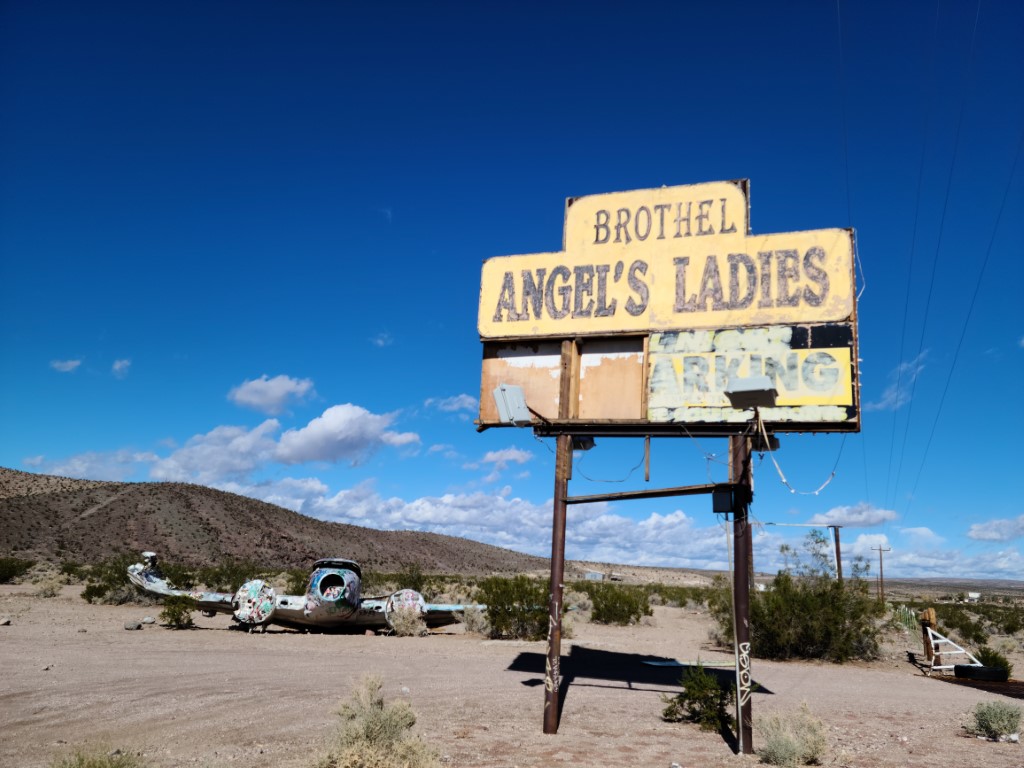Goldwell Open Air Museum is definitely one of the Nevada gems and it can proudly follow the brand of Weird Nevada. It’s a permanent collection of very strange and at the same time breathtaking sculptures, with the modern adaptation of the famous “The Last Supper” as a centerpiece. Started in 1984, the exhibition kept expanding by new coming artists who wanted to try out the new environment.
It’s placed right at the entrance to the ruins of Rhyolite ghost town. Both museum and ghost town are a must-have stop on the way to Death Valley if you’re driving by those desert lands!
The Last Supper
The center of the museum collection is “The Last Supper Sculpture”. It fully resembles the famous fresco of Leonardo Da Vinci by the figures and poses made in the ‘ghosty’ style and integrated into the desert environment.
Belgian sculptor Albert Szukalski was deeply attracted by the Mojave Desert and came to it with a group of other artists in 1984 to create the most significant art piece in his life. The idea of placing the Last Christ Supper representation near Death Valley (where he initially wanted to reconstruct it) brings very symbolic value to the installation. Another interesting association is ghostly sculptures being placed near ghost-town. Like guardians of the town remnants, they might represent the silent voices of Rhyolite’s past.
Another statue with a color palette is looking at the main composition. Most likely it represents the author itself, but also it might refer to Da Vinci.
Later same 1984 year Szukalski added one more unrelated sculpture “Ghost Rider” that stands a bit aside from the main composition.
5 years later Szuvalski added to the collection one more art piece called “Desert Flower”, but it was destroyed by a 2007 windstorm. Gladly that disaster didn’t make any serious harm to the “Last Supper” installation. And although Szuvalski initially thought that his ghosts made of fiberglass would stand in the harsh desert climate only for a couple of years, they still stand in the middle of nowhere and charm new generations of visitors like a magnet.
Other Figures
After “The Last Supper” was finished other artists got attracted by the endless possibilities of creation in open-air and the desert environment. Here I’ll try to list the most famous works in the Goldwell Open Air museum, but it’s not the full list and there’s some more to explore on your own.
Lady Desert: The Venus of Nevada
“Lady Desert: The Venus of Nevada” will definitely catch your sight as its 25-foot tall figure made in LEGO-style looks very expressive. Made of bright pink and yellow blocks, it stands out from the outlines of the surrounding desert. Dr. Hugo Heyrman used 2-D pixelated model virtually created on the computer and then formed it into a 3-D sculpture in 1992. “Art helps the re-experiencing of forgotten things,” says Dr. Hugo showing how reference to the ancient greek figure can be re-interpreted in the modern western world. Park is actually doing its best in maintaining the look of the museum, for instance, Venus’ pink color was refreshed in 2005 and it looks bright again.
Icara
In the same 1992, another sculpture was added to the park – “Icara” by Dre Peters, an artist from Arizona. Icara is a female reference to a Greek boy Icarus who wanted to fly as high as possible close to the sun. Who knows if her journey will be more successful than the journey of the original Icarus… anyway… Icara’s appearance fits the bright and hot Nevada sun very well.
Tribute to Shorty Harris
This strange couple was introduced by another Belgian artist Fred Bervoets in 1994 -“Tribute to Shorty Harris”. Probably, we’ll never find an answer to why the penguin is following that miner… Not a mule… Not a donkey… But for some reason, the author placed this Antarctic bird in the middle of the Mojave desert. It looks like absolute nonsense and gives some feeling of surrealism. Well… It looks really cool anyway!
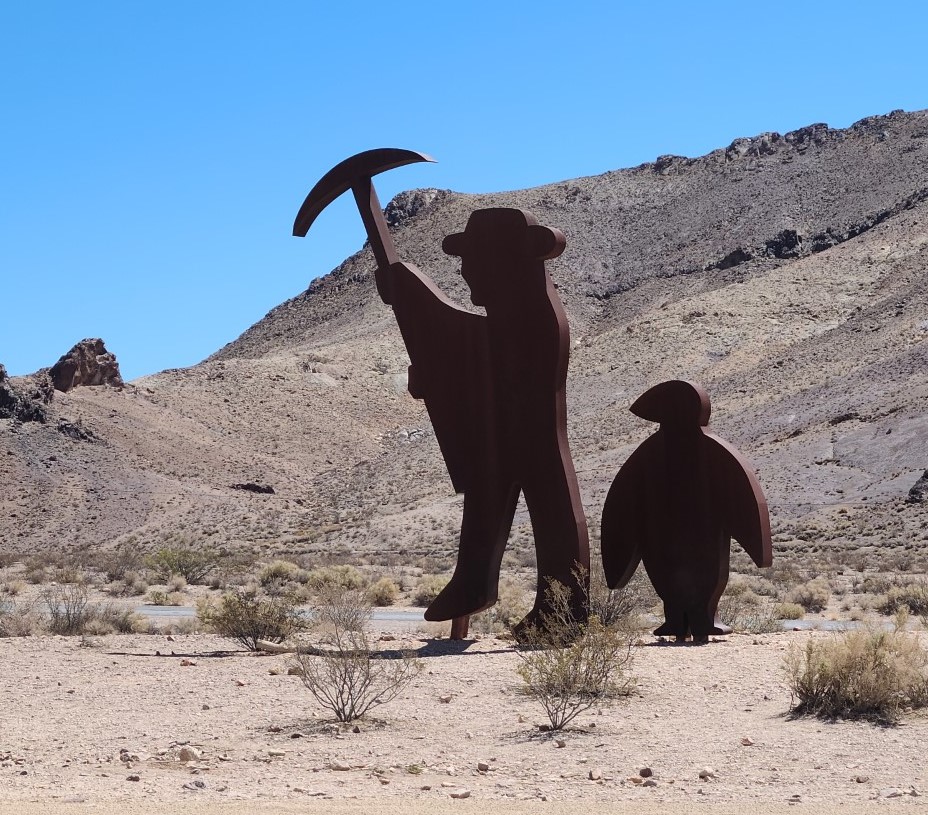
More Works
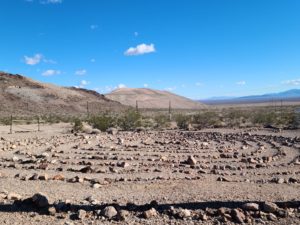
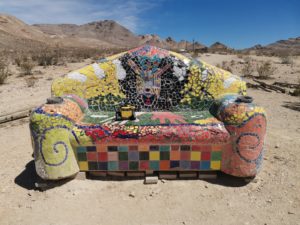
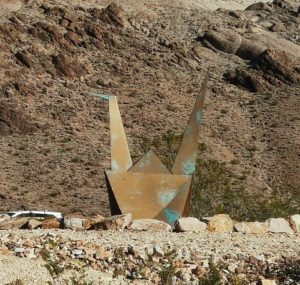
Admission/Facilities
The museum is open all day and is admission free. There are no services at the museum. Vault toilets are available near the train depot building in Rhyolite.
There’s a small visitor center/gift shop, but it’s open only on some weekends without an exact schedule.

